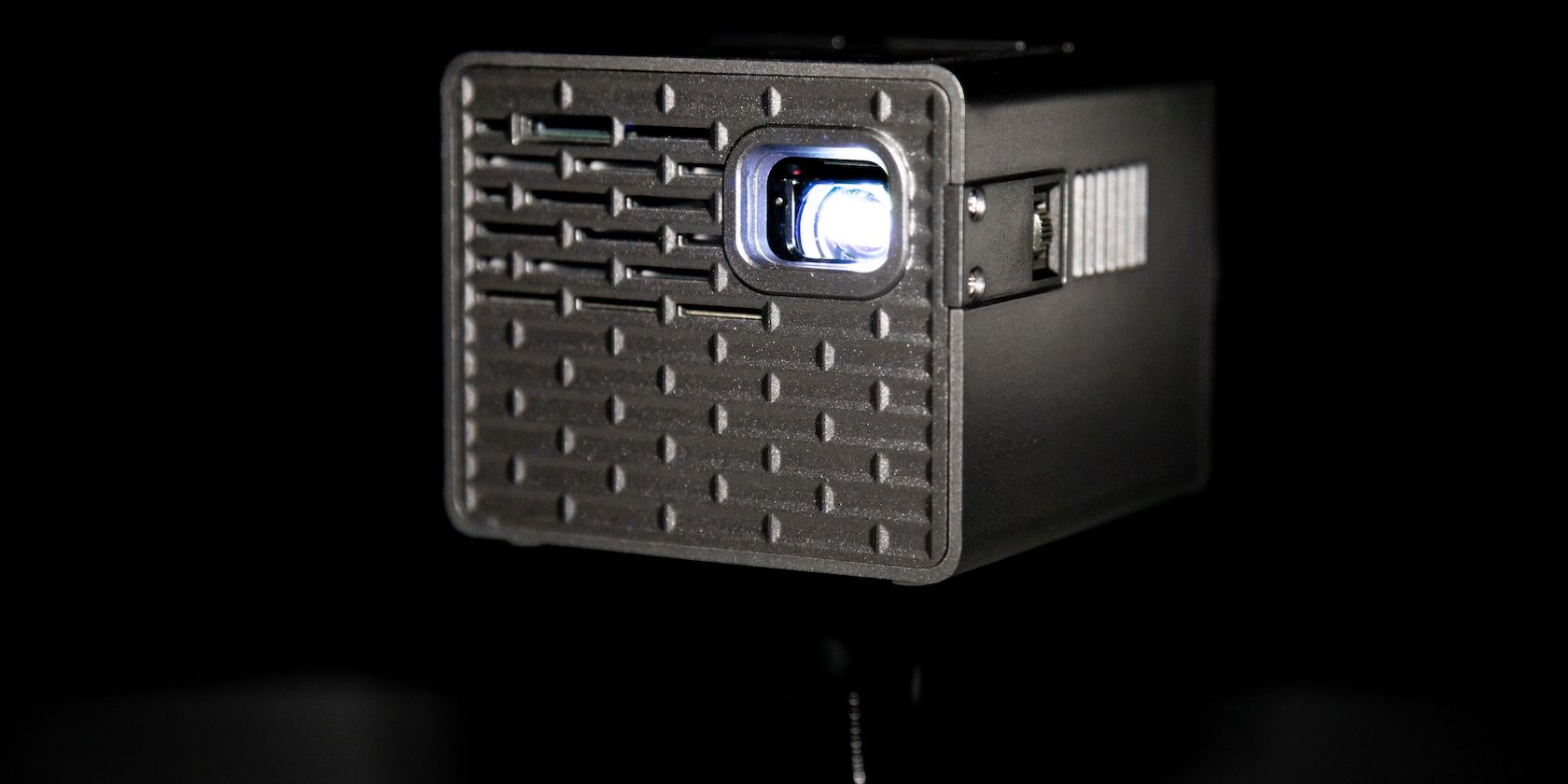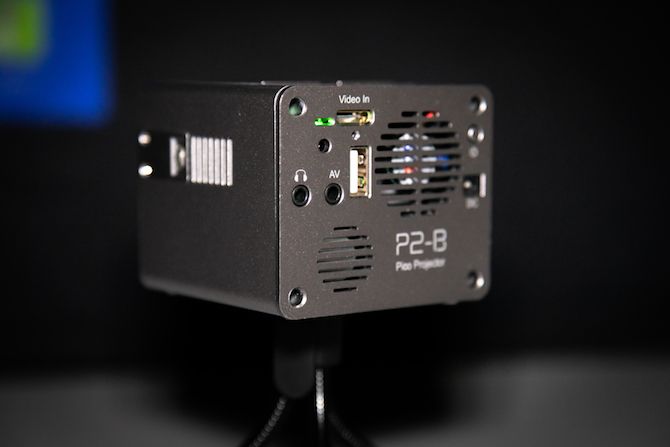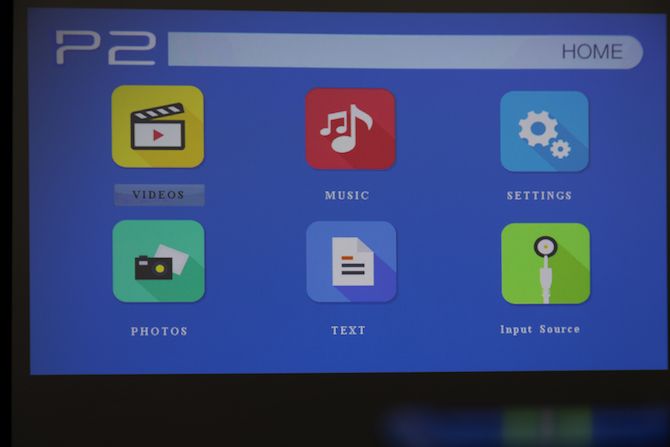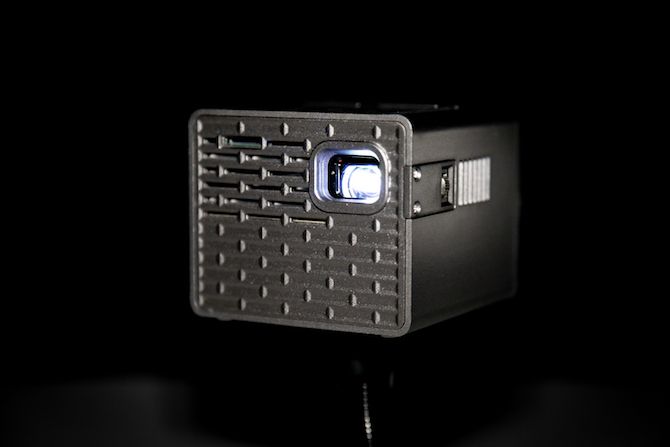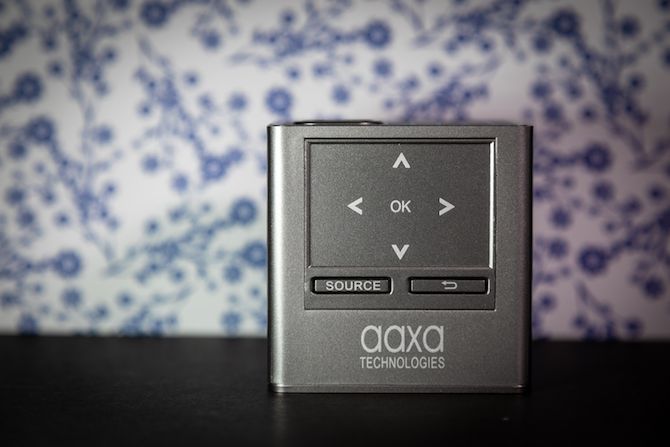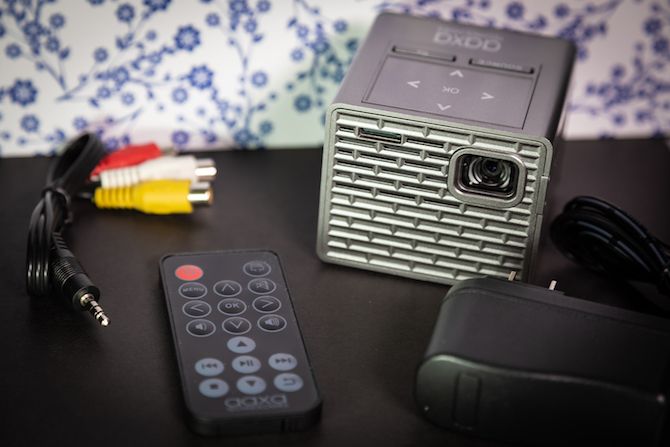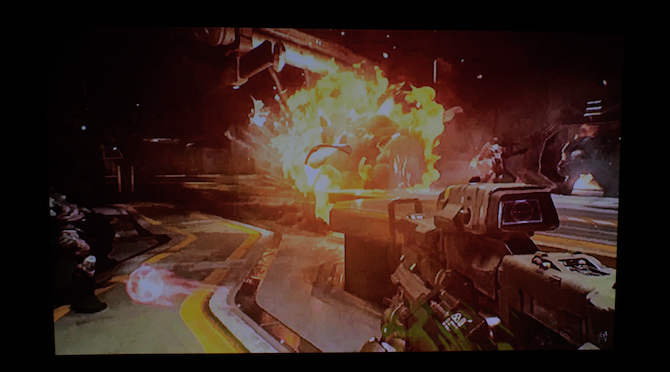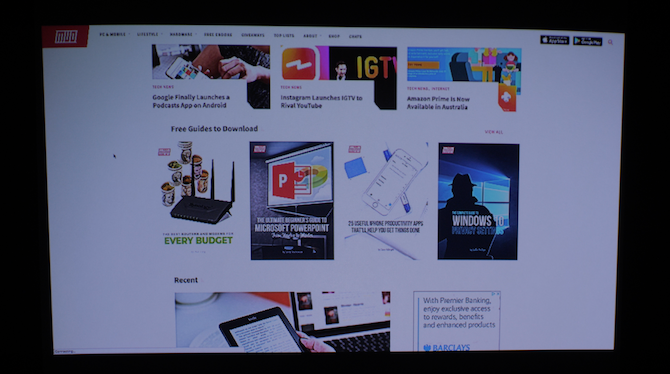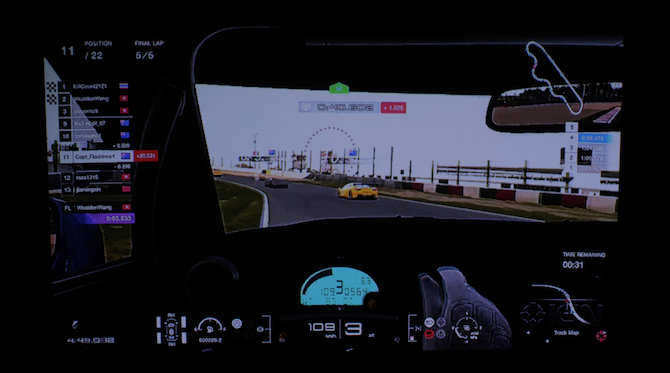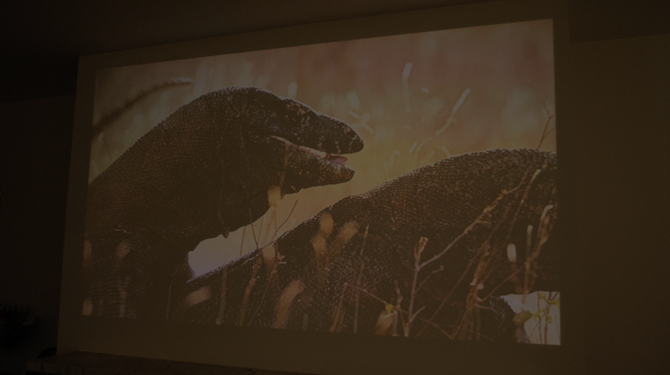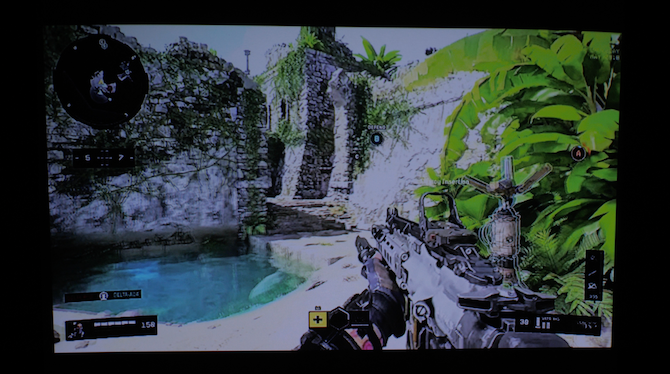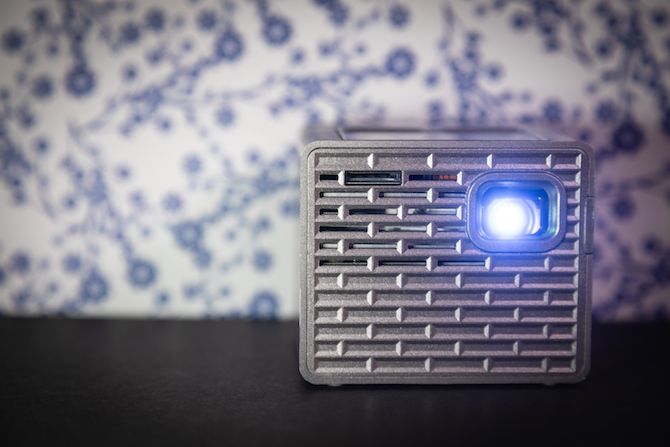AAXA P2-B Pico Projector
An ok pico projector, but it really struggles with brightness. It has a small footprint with a big battery, but that's about it. Lack of keystoning is the death knell.
The P2-B is a tiny pico projector produced by AAXA. Measuring just 2.8 x 2.8 inches, and weighing in at 8.8 ounces, this projector is certainly compact. Using an LED light source with built-in lithium-ion battery, and HDMI input, it's not lacking in features either.
Features and Design
The P2-B has a large number of features for a pico projector. The most notable of which is the mini HDMI input. It would be nice to see a full-size HDMI input, but the fact that one is included at all is huge, especially given the $180 price.
Alongside mini HDMI, you also get:
- 1 x DC power input
- 1 x AV input
- 1 x USB Type-A input
- 1 x MicroSD card slot
- 1 x Headphone output
This projector is somewhat smart. It cannot connect to the internet or wirelessly stream media from your devices, but it can playback media stored on USB flash drives or MicroSD cards. A basic software interface is provided to change settings or choose different media and sources, but it is very basic.
The built-in, 2000mAh battery is large enough to run the projector for a maximum of 2.5 hours, so you'll be able to squeeze a whole film out of it...just. There is one big problem here, however. It appears the charger is not powerful enough to charge and use at the same time. When the battery is fully depleted, the projector will turn off, even if it's plugged in.
If you begin charging with a flat battery and continue watching, the projector will continue to switch itself off. This makes the P2-B almost useless. This may be our aftermarket UK charger, but it's a worrying trend, which happened on more than on occasion.
The lens is inset from the front panel, which keeps it safe from harm, but there's no shutter or lens cap, so you'll need to be careful storing it, otherwise, you may end up with a lens covered in dust. The left-hand side panel contains an analogue focus dial, which is precise enough to allow exact focusing.
On the top of the unit, there are basic controls, and these loosely mimic the included remote controller. The power switch is located on the rear, but these can be tough to press. If you're mounting this projector on a stand, it's fine, but you may accidentally move the projector if it's placed on something like a table.
Like all projectors, the P2-B uses a fan to keep the internals cool. This isn't unusual---most projectors use fans, but it is very noisy. If you're using the projector on a hard surface, the vibrations and noise are amplified.
The built-in speaker provides a woeful attempt at sound reproduction. You'll be fine with headphones or an external sound system, but for the most part, this speaker is drowned out by the fan noise! At max volume, it's quiet and tinny.
The bottom of the unit contains a 1/4-20 tripod mount like you'll find on any camera. Unfortunately, this isn't threaded, so the first time you use it you'll need to "cut" the thread. It's also made of plastic, so it's not very strong and leaves bits of plastic scraps around.
Inside the box, you'll find the projector, AV to composite cable, charger, mini tripod, and remote. No HDMI cable is included, so you'll need to purchase one. Mini HDMI is far less common than full size or even micro ports.
The small included tripod is weak and flimsy, but it does an ok job at supporting the projector. Any large bumps, however, will soon knock it over.
Image Quality and Brightness
The P2-B is able to produce a 100-inch image, providing the room is dark enough. The throw ratio of 1.2 is good (though not "short-throw") and simply means that to produce a 100-inch image, you need to place the projector 120-inches away. To put this in perspective, many larger projectors have a throw ratio of 1.8 - 2.2, so the ability to produce a huge image in a small space is excellent.
If you're unsure what throw ratio you need, then read our guide on how to set up a projector based home theater.
The minimum focus distance is also excellent. If you need to, you can project from as little as a few inches away and still get a sharp image. This is a bit pointless, however, as the screen will be tiny.
The sweet spot for screen size is somewhere between 65 - 75 inches. You'll find this produces the perfect balance between brightness, image size, and distance.
This projector is rated for a maximum brightness of 130 lumens, which isn't very bright at all really. Your average home cinema projector will output somewhere between 1500 - 2500 lumens, but that's ok. Pico projectors aren't really designed for home cinema use, but they really excel at portable projection and quick setup.
This projector is bright enough to see clearly in a darkened room, or a corner without any direct sunlight (and the lights off). You'll really struggle to see the image with all but the dimmest of lights on and forget about using it outdoors during the day.
Images are projected using triple red, green, and blue (RGB) LEDs. These produce brilliant colors, little heat, and an outstanding lifespan. You can expect to achieve more than 20,000 hours of use, which is a staggering number for a projector. Larger "traditional" LCD projectors would be doing well to achieve 5000 hours.
The use of LEDs instead of DLP, LCD, or other projection technology, means that colors look outstanding! This is the best feature of the P2-B. Colors look bright and vivid, and blacks look great with a contrast ratio of 1000:1.
While it can handle a 1080p signal, the WVGA native resolution of 854x480 is quite terrible, especially in the age of 4k and beyond. Due to this, images don't always look as sharp as they could. If you're sitting far enough away, images look great but sit too close, and you'll notice the lack of resolution.
Finally, there's no keystone correction. Keystone correction (or keystoning) allows you to adjust the angle of the image. This is especially useful when the projector is at an angle to the screen. Without it, you need to ensure that the projector is parallel to your screen. If you're off even by half an inch, you'll get a wonky image.
Not having keystoning is a glaring oversight, and is one of the biggest reasons not to buy this projector. You can work around it, but you'll need to consider projector placement, rather than throw it down and get watching---which is the whole point of a pico projector.
How Useful Is It?
Pico projectors aren't for everyone (they will never get the IMAX experience at home), but if you need their features, they can be wonderful. The P2-B does a decent job. It will never live up to larger home cinema projectors, but that isn't the point. Great battery life, a whole host of inputs, tiny size, and amazing colors are all great selling points.
Being able to throw it in your bag, or project onto the side of a tent, or start projecting wherever you throw it, is amazing. Unfortunately, it's let down by the lack of keystone correction, weedy tripod mount, noisy fan, bad speakers, terrible brightness, and poor resolution. It's little better than the AAXA P4X, and that came out several years ago.
If you're looking for something a bit more professional, then take a look at our Nebula Mars Review, it's one of the best portable projectors around with loud internal speakers, though it costs a lot more than the P2-B.
If you'd like to win an AAXA P2-B Pico projector for yourself, then all you have to do is enter our giveaway contest below!

